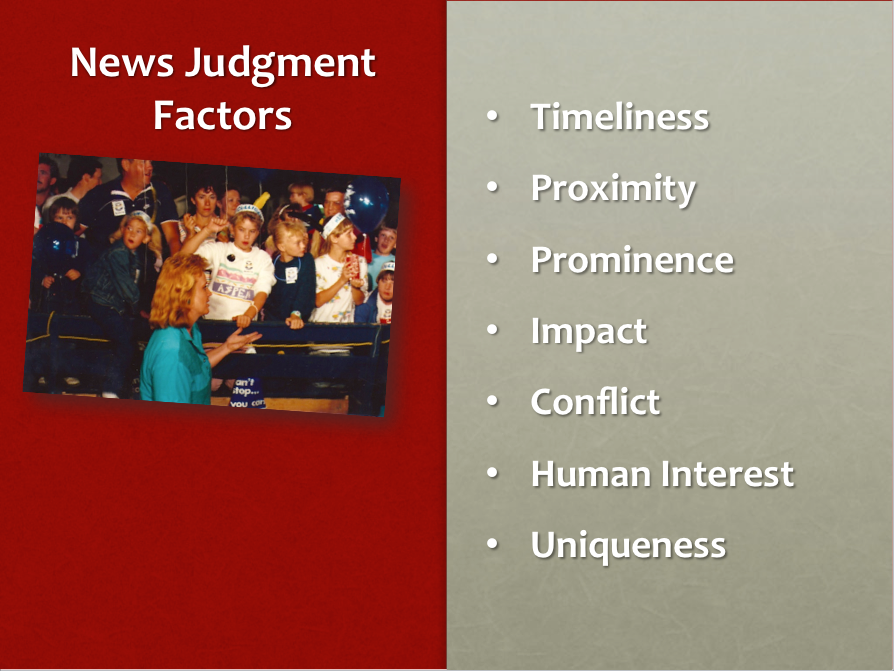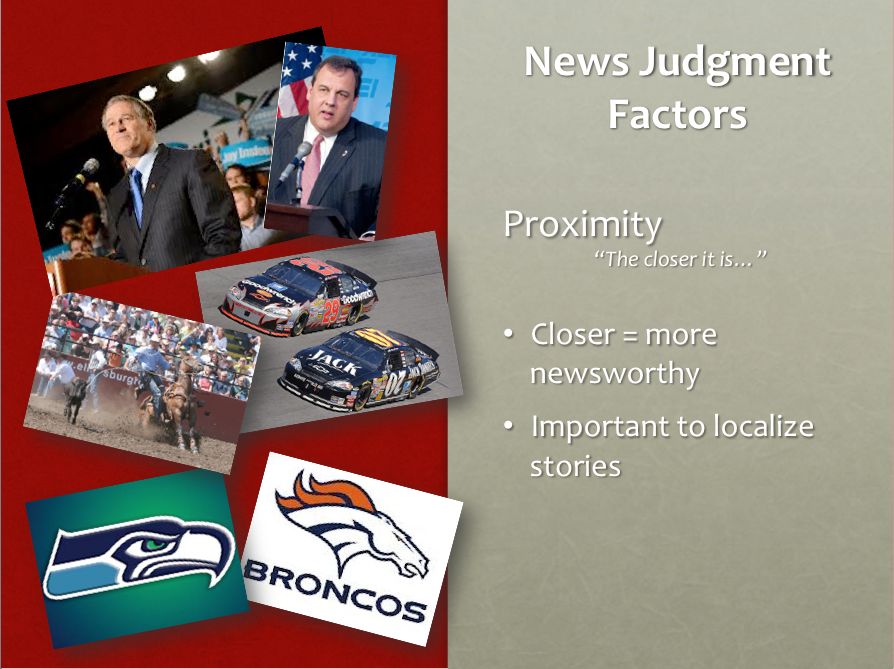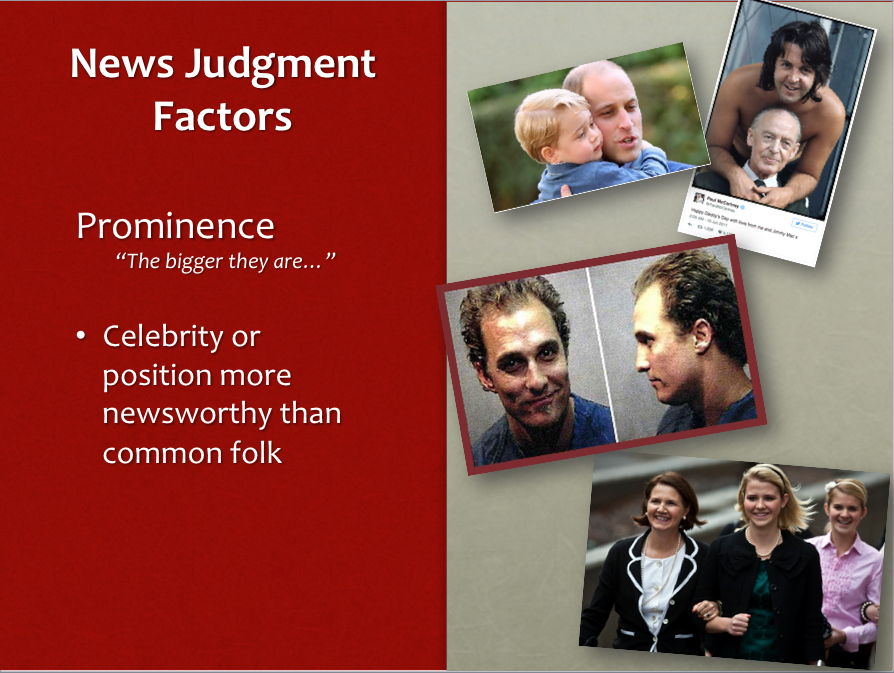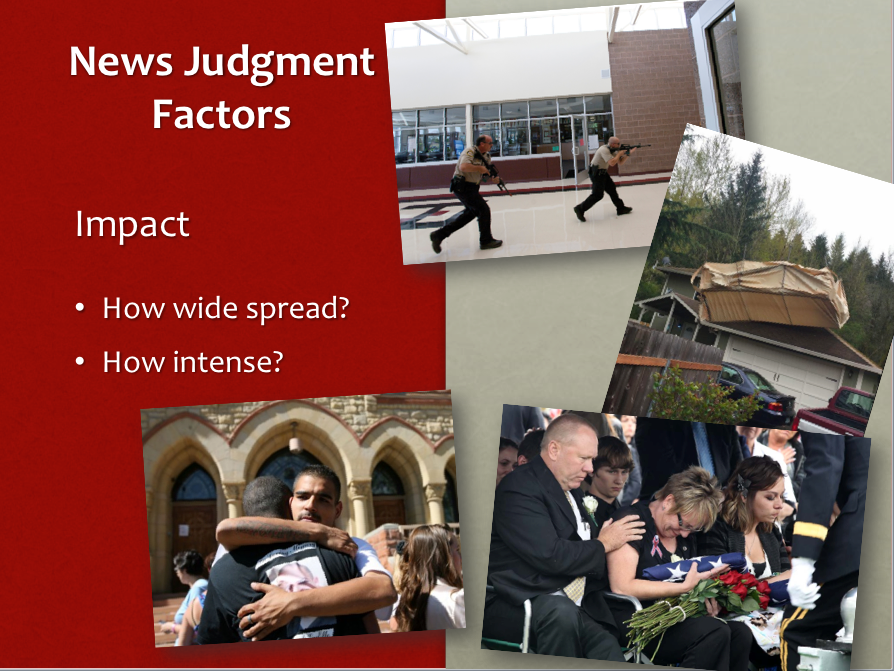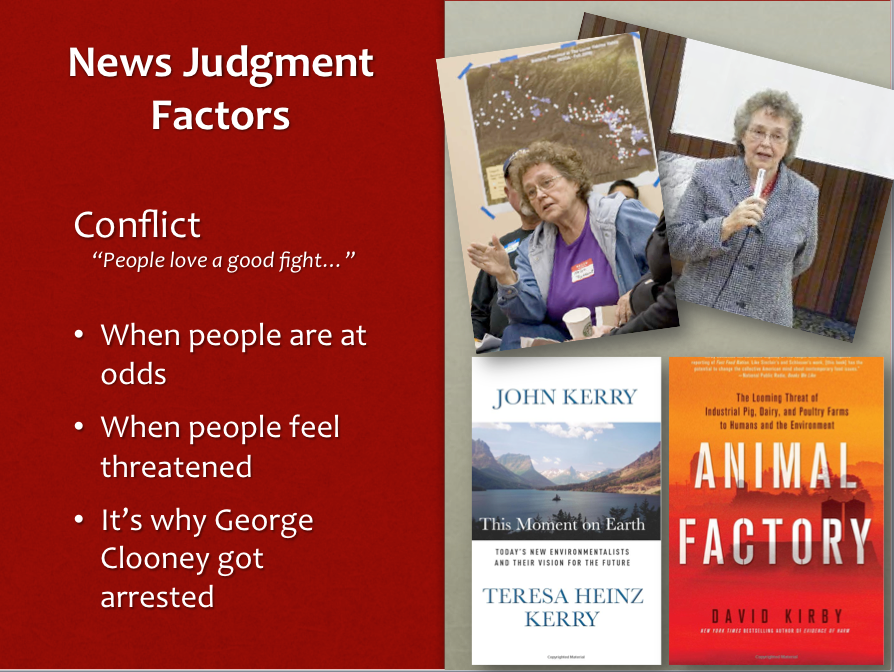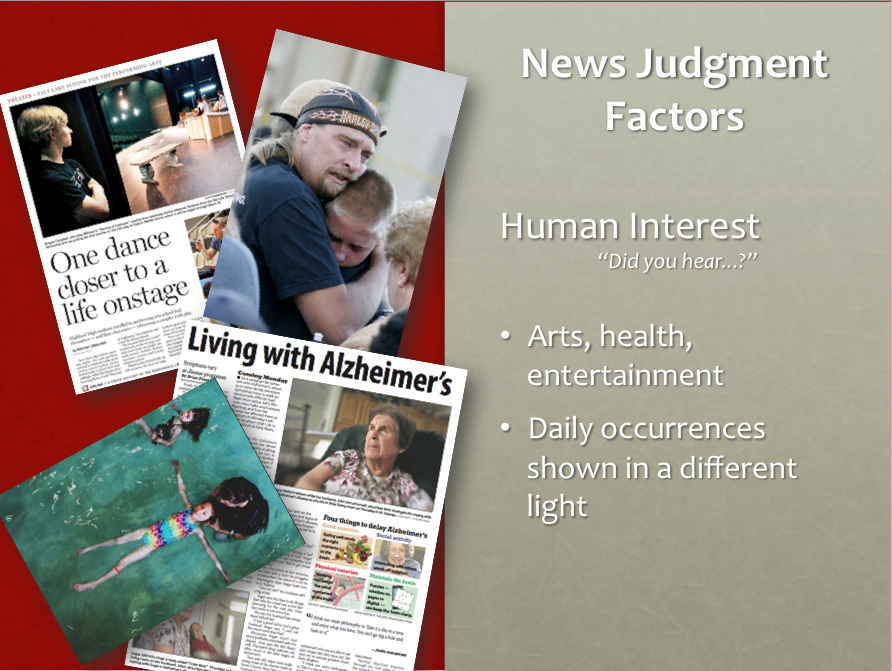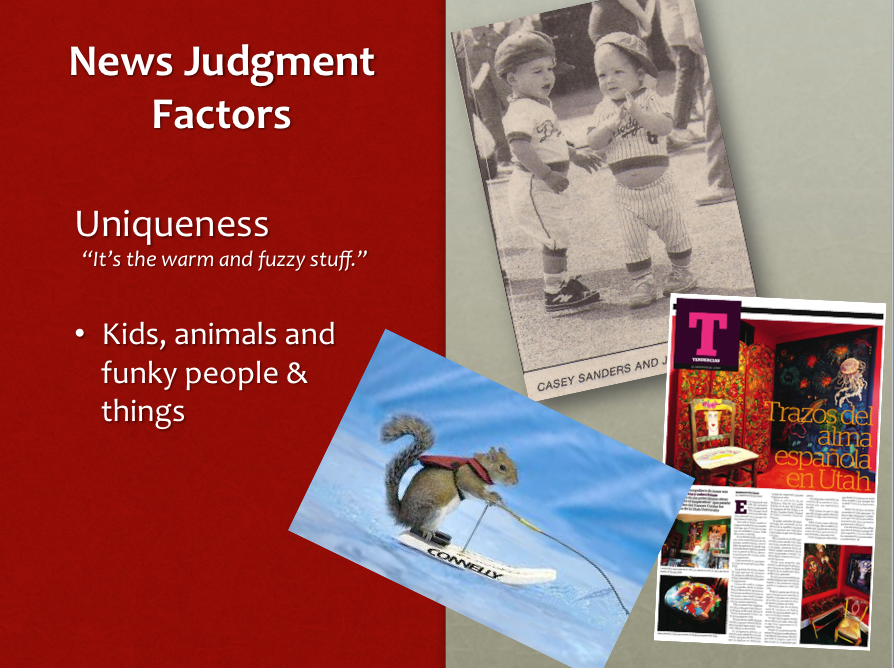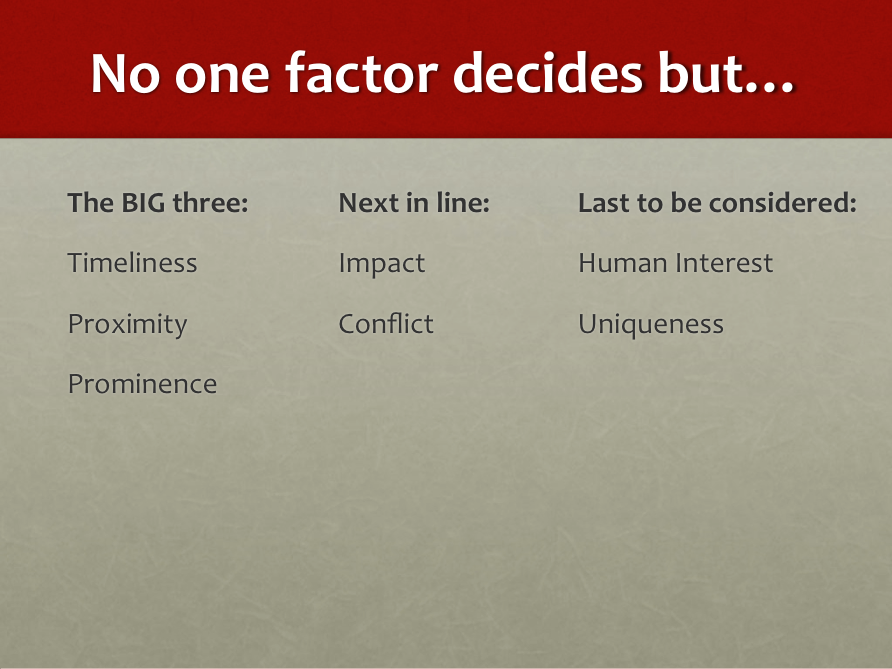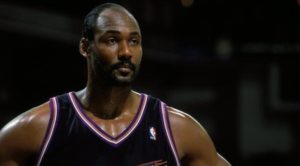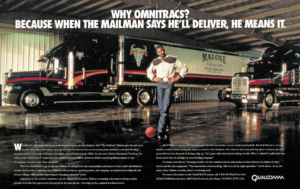by Terri Reddout
Before we can start talking and writing news we need to know what news is. Generally, a picture of the family cat is NOT news. Unless the family cat kept mewing and clawing at the neighbor’s door and that woke them up so they got out of the house before it burned down to the ground. Now your family cat IS newsworthy!
There really isn’t a magic formula for determining what news is. I wish! If there were, I’d bottle it up, sell it for a hefty price and retire someplace where temperatures are in the low 80s and bare-chested men bring me drinks with little umbrellas in them all day long. (I can dream, can’t I?)
Which stories should we cover? What story leads the newscast? What story goes above the fold? Which story goes below the fold or on page 3? Do we commit a reporter and a photographers to this story? Or do we commit the entire news team?
These are all tough questions, with a lot of variables you must factor in. But… there are some guidelines to help us determine what is NOT newsworthy, what is newsworthy, and just how newsworthy a story is. You’ll find various versions of these guidelines around the business, but they are generally combinations or more precise divisions of these seven qualities or factors.
I call them T-P-P-I-C-H-U
That’s a picture of me during a live shot at the Eastern Idaho State Fair many years ago. I include the image because I considered these news judgment factors every day of my television career. Those factors are timeliness, proximity, prominence, impact, conflict, human interest and uniqueness. Let’s look at each of these factors individually.
Timeliness
Timeliness is simple. The more recent something happened the more news worthy it becomes.
- Something that happens today is generally more newsworthy than something that happened yesterday.
- Something that happened one hour ago is more newsworthy than something that happened two hours ago.
- Something that happened two minutes ago is more newsworthy than something that happened five minutes ago.
The photos in the slide above won awards from the Utah Chapter of the Society of Professional Journalists. I put together their awards show video, so I have access to these images. (BTW- because I’m using them in a teaching situation I don’t have to ask for permission (fair use). If I were selling this course on-line, I would have to ask permission and probably pay some type of royalty.)
- A story about a gunman who attempted to rob a store this morning is more newsworthy than a story about a gunman who robbed a store yesterday.
- The story of an old church burning is more newsworthy an hour ago than it was two hours ago. Two hours ago it was burning. What’s happened in the last hour that caused it to continue burning? That’s what’s more newsworthy.
- The guy in the bomb suit is more newsworthy two minutes ago than he was five minutes ago. I would hope that in the ensuing three minutes something new has happened, some decision made that will help diffuse the bomb. So an image of him approaching the bomb is more newsworthy than an image of him gearing up into the bomb suit.
Timeliness by itself isn’t enough to make something newsworthy. As I type this I can hear cars driving by and I know people are walking by on the sidewalk. The fact that it’s happening now doesn’t make it newsworthy. (Although the cars and people passing by this moment are probably a more newsworthy event than the cars and people passing by two weeks ago.)
Proximity
Another easy one. The closer it is to us, the more newsworthy it is.
But again, the cars and passersby are near me, but that doesn’t necessarily make them newsworthy.
- What Washington’s Gov. Jay Inslee has to say generally has more news value to the people in Kittitas County than what former New Jersey Gov. Chris Christie says. And what Christie has to say has more impact to people who live on the East Coast than it does on people who live on the West Coast.
- Rodeo in Kittitas County is generally more newsworthy than NASCAR because Ellensburg hosts one of the top 10 rodeos in the country. But on the flip side, NASCAR is generally more newsworthy than rodeo in Indiana; home of the Indianapolis Motor Speedway.
- While I’m sure there are some Bronco fans in the Kittitas Valley, the Seahawks generally have more news value simply because they are just over the mountains and they are the only pro football team in the state. People in Pullman and Spokane are generally more interested in the Cougars than they are in the Huskies. (Unless it happens to be Apple Bowl week, but even then they are more interested in “their team” rather than that other d*mn, high and mighty team across the state. Stupid purple.) And frankly, if EHS is having a good football season, it’s probably more newsworthy locally than the Seahawks, the Cougars and the Huskies rolled up into one.
Prominence
The more well-known a person is, the more newsworthy they are.
Like it or not, if police arrested me for DUI that would probably be more newsworthy than if police arrested you. If CWU’s president got arrested for a DUI it would probably be more newsworthy than if I got arrested.
That’s because I’m more prominent than you simply because I’m a faculty member in charge of educating young minds. I have a role in the community. CWU President Jim Wohlpart is more prominent than I because he holds a government appointed position and he represents the university. Therefore, he gets more coverage than I would for a DUI. The bigger they are, the more newsworthy they are.
- That’s why pictures posted of Prince William and Prince George on Father’s Day got more press than that touching tribute you posted for your dad.
- Even an old picture of Paul McCartney and his dad got more press than that great shot you took of you and your dad hiking last week.
- Back in 1999, police arrested Matthew McConaughey for smoking dope and making a lot of noise playing his bongos in the nude. That got a lot more press than anyone else who got busted for smoking weed that week.
- You don’t even have to be a celebrity to become prominent. The last photo is of Elizabeth Smart and her family leaving the courtroom. Smart’s name may ring a bell. She was the young Utah girl kidnapped and held by a crazy religious zealot for nearly a year. He made her his bride. Nine months later police found her following the crazy zealot around just 18 miles from home. Before being kidnapped, Smart was just some junior high kid. After her kidnapping there was a made-for-TV movie about her, a book and she even did a segment on 60 minutes. Events made her prominent.
Impact
Impact deals with the effect an event has on people. A brown-out that leaves half of Seattle without power on a 90 degree day has more impact than when my mother-in-law went without power during the December holidays. The brown-out impacts thousands of people. There were only five of us in my mother-in-law’s house.
But the intensity of the event can also be a factor. My mother-in-law’s power outage lasted for nearly a week and impacted five houses on her street. After a day and half they move families (and their visiting relatives) out of their homes and into a local hotel. We ended up staying with relatives and then driving an hour south to celebrate Christmas at my son’s house in Eugene. My mother-in-law’s power outage became more newsworthy due to the intensity of the impact the longer it went on and when it forced families out of their homes for the holidays.
- Police entering a mall with guns drawn has a wide spread impact. Hundreds of shoppers got out of the mall. Hundreds were still trapped in the mall as police hunted down the active shooter.
- When a wind storm hit Portland it became newsworthy due to the widespread damage it did to homes around the city. The impact of the wind storm becomes intense when you find a cargo container parked on someone’s roof.
- The picture of the man hugging another man is from a funeral. Four teenage cousins died in a car crash, impacting four branches of the family. While it was not a wide-spread impact, the intensity of the impact on one extended family made it newsworthy.
- The picture of the woman holding the flag graveside was from the funeral of a soldier from a small town in rural Utah. He had been the high school football star, a good student, who did a lot of service in his community. His death had an intense impact on such a small town.
Conflict
If we were in a class together, I’d pull up this slide and say “This is what I’m going to look like in 15 years.” The pictures are of my mother. I include her here because for many years she was smack dab in the middle of a conflict.
Conflict is when people are at odds with each other or when they feel threatened by others. It’s why when George Clooney protested against the genocide in Darfur he wanted to get arrested. A prominent personality, being hauled off in handcuffs (really, they were just zip ties) would bring more attention to the government sponsored rape and murder going on in Sudan. The story of a nice guy doing a good thing and being arrested for doing a good thing was a “conflict” itself.
- For years my mother was the “face” for a grassroots group of people fighting the spread of corporate dairies in the Yakima Valley. These corporate dairies built and stored “poop” water in lagoons directly across the fence from homes. They couldn’t sleep with the windows open due to the smell. Outdoor barbecues were impossible due to the heavy concentration of flies. My mom and her neighbors took action when a local dairyman stood on his side of the fence and said “Look lady, my cows’ shit don’t stink.” Well, it did stink and it polluted U.S. waterways and the well water used in rural homes. My mother’s group sued some of these corporate dairies in federal court and won. They used the money to find evidence of other misdeeds and to help families with polluted well water.
- On the other side, these dairies were run by people who had been in the dairy business for generations. One way they could keep their business running was to concentrate the feeding and milking areas to cut down on costs. My mother’s group suing them in federal court threatened their family businesses. That’s conflict and it’s newsworthy.
- Because my mother was in the middle of this conflict for so many years she became “prominent.” At ecological law conferences, law students would run up to my mom and ask her for her autograph. John Kerry and his wife included her story in a book, as did David Kirby and Robert Kennedy Jr. In fact, if you look in two of these books you’ll find my name listed in the index. (Just Google “Helen Reddout” and you’ll find a ton of articles.)
Human Interest
Some things are interesting not because they are timely, or local, or involve a prominent person, or impact a group or cause conflict. They are newsworthy simply because it appeals to our human need to seek knowledge and be entertained.
Generally, these human interest stories center around the arts, health and entertainment. But, occasionally, what can be a news story ends up having more of a human interest angle. In that case, it becomes a “feature” story image.
- A story about what it takes to put together a high school musical piques our interest.
- The picture of a little girl learning to float becomes more newsworthy thanks to the angle the image is shot at. Rarely do we see someone floating on water from above.
- A story of what it’s like to live with Alzheimer’s or what it’s like to care for someone with the disease cries out to us due the widespread “impact” of the disease. But this is more of a human interest story because it focuses on the people dealing with the disease rather than Alzheimer’s itself.
- The picture of the man hugging his son comes under this heading of human interest. If you were to look at the image up close you’ll notice that the man is wearing a Harley Davidson headband. He’s actually a member of a local motorcycle gang. The reason this image is human interest is because he’s hugging his son after learning his older son was knifed to death. That juxtaposition of a hard-living motorcycle gang member being brought to tears by his son’s death gives it a human interest angle and makes it newsworthy.
Uniqueness
This is why you see water-skiing squirrels and video of a world-record 850 person human/mattress domino event in the news.
A minor accident of the Interstate involving two trucks that doesn’t back up traffic isn’t newsworthy. But if one of the trucks was carrying peanuts and the other truck was hauling elephants to the circus this minor accident becomes newsworthy.
- The black and white photo of the two kids in baseball uniforms landed on the front page of the Wenatchee World 30 some years ago. Why was it on the front page? Were the kids prominent? No. Were they involved in some conflict? No. Was what they were doing impact people? No. Was it my son and his best buddy looking as cute as cute can be dressed up like Dodger baseball players in the kid’s parade? Yup. The picture of my son and his friend was simply cute. It made people say “Ahhhhh…” either out loud or in their heads. The uniqueness of these two toddlers in uniform made my son and his friend front page material.
- The article about the Spanish artist is unique simply due to his colorful art and because he’s practicing this colorful art in the middle of Mormon-land.
- Why is a water skiing squirrel newsworthy? Do I really need to explain? BTW- there are several water skiing squirrels out there. They work all the conference center hunting and fishing shows.
Putting T-P-P-I-C-H-U into practice
None of these news factors on their own make something newsworthy. Generally it take a combination of two, three or more factors to make a story newsworthy. But, if I had to say, timeliness, proximity and prominence are the heavy hitters.
Let me share a hypothetical example I came up with when I lived in Utah. You have to know who Karl “Mailman” Malone is for this example to work. Malone played power forward for Utah Jazz. He won an Olympic Gold Medal as a member of 1992’s “Dream Team.” Twice he was the NBA’s MVP, he landed on the All-Star team 14 times, and made the All NBA First Team 11 years. He sank more career points (36928) than any NBA player other than Kareem Abdul-Jabbar. Basically, Malone was hot stuff and the Jazz were in the playoffs thanks to him.
In addition to playing NBA basketball, Malone loved driving truck. We’re not talking a Ford F150 or a Ram 3500.
Malone had a commercial driver’s license and drove 18-wheelers. He owned a trucking business known for its colorful trailers promoting Malone Enterprises.
Okay, now that you have that information, here’s my hypothetical event that involves all seven news factors.
- An two semi-trucks just collided with a car on the Interstate
- Timeliness. It just happened. But that’s not enough to make it newsworthy.
- The accident occurred on the Interstate near downtown Salt Lake City
- Proximity. At the time I lived in Utah so Salt Lake City was in my proximity.
- One of the trucks had Malone Enterprises painted on the trailer
- Prominence. Malone was a prominent name in those parts.
- The Malone Enterprises truck was being driven by Karl Malone
- Prominence again. Even more newsworthy because the man himself was behind the wheel.
- The accident backed up traffic for several hours during the evening rush hour.
- Impact. Hundreds, maybe even thousands, of people on the road were delayed getting to where they were going thanks to the accident clean-up.
- Malone is okay but he did suffer a sprained wrist.
- Impact. If it were the off-season Malone’s sprained wrist would have impact. He’s Karl Malone and he uses that wrist to sink baskets. But at the time I created this scenario, the Jazz were in the NBA finals against Michael Jordan and the Chicago Bulls. A sprained wrist, no matter how minor, would have a BIG impact on the outcome of the championship.
- The Jazz need to determine if they should let Malone sit out the game that night or let him play.
- Conflict. There’s conflict between the team and Malone. Maybe Malone wants to play, but maybe the team wants him to sit the game out and allow his wrist to heal so he’ll be ready to go for the crucial final games. Or vice-versa.
- There’s also conflict between the team and its fans; they want a win tonight, but they know they need Malone in order to win the championship.
- A Weber State (the university I taught at) nursing student happened to be in her car behind the accident. She grabbed her first aid kit and ran to see if she could help. She ended up wrapping Malone’s wrist. The funny thing is she’s not a basketball fan so she didn’t know it was Malone she helped. It was only after she told her friends the story that they pieced it together and determined it was Malone she bandaged up.
- Human Interest. This scenario still revolves around the truck accident but it becomes human interest because she didn’t know who she was helping a big celebrity.
- The other semi-truck involved in the minor accident happened to be delivering the Chicago Bulls basketball gear to the Delta Center.
- Uniqueness. How weird is it that a Utah Jazz star and the truck carrying the opponent’s gear would end up in the same accident? (It could only happen in my mind.)
Now imagine the same scenario with two ordinary trucks, that didn’t back up traffic significantly, no one prominent was involved, and it happened 150 miles away in a rural area two days ago. Not so newsworthy, right?
Now for a real example
When I worked in the Boise, Idaho television market I got pulled off a story about teenagers helping the community in order to cover a house fire. Why? While both stories had impact, the house fire had a more intense impact and had timeliness on its side.
When my videographer and I arrived, the fire fighters were rolling up the hoses. There were no flames. All three adults and five kids made it out of the house safely. Sure, it was still timely and close, but there wasn’t much impact, and no one prominent was involved. Not much of a story, right? Wrong. Thanks to human interest and uniqueness the house fire story ended up the second story in the newscast that day. The lead story focused on the end of the Idaho legislative session.
How did my story end up second in the line-up? Well, I got an interview with the home owner. He told me all his family’s possessions were ruined. He had no clothes for his kids. No diapers. Nothing. His car had just broken down. He felt as though moving to the area had just brought on a lot of bad luck. He said he was thinking about moving back to Coeur d’Alene, Idaho.
Now that’s human interest. But there’s gotta be more to make it a top story, right? There was.
I got another interview with the couple’s friend. She sobbed while describing how she ran back in the burning house to grab the second of two kids she saved from the fire. With tears running down her face, she described how she tripped over her own dog in order to rescue the second kid. She said her dog was still in the house, dead, but she was glad she helped get the kids out.
OMG! That’s human interest on overdrive with some uniqueness toss in. After we ran the story, our viewers flooded the family with food and clothes. The woman received nine different offers of puppies to replace her dead dog.
Your Assignment
You didn’t think I’d make you read all this stuff and just let you alone, did you?
Go back to our Canvas Home page and complete the “What is News?” assignment.
